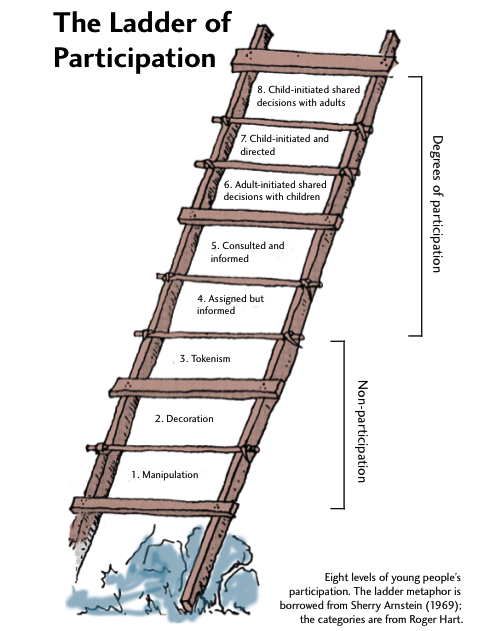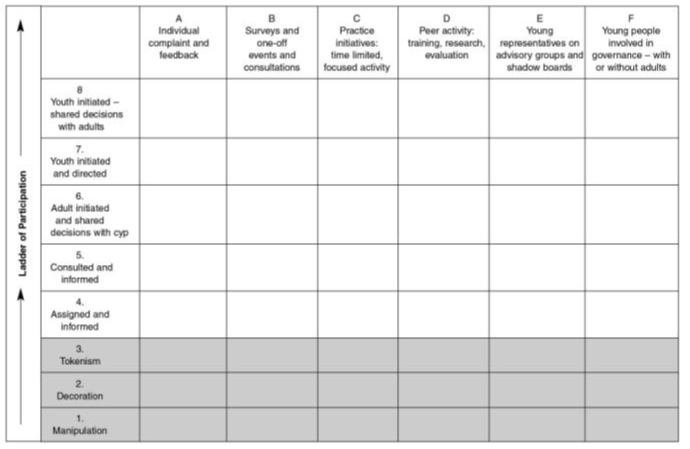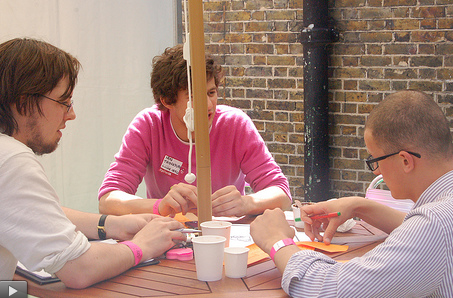[Summary: Reflections on going beyond Facebook in online youth work. Reposted from the Youth Work Online blog]
 When I started out researching Youth Work and Social Networking in 2007 I really wanted to look at ‘Youth Work and the Internet’, but the needs of focussed research meant the boundary was drawn to look specifically at social network sites. At the time, a considerable number of young people were on Bebo and MySpace, and only certain groups were using Facebook, which had not-long opened it’s doors to everyone – having started out restricted to students at selected Universities. Talk of social media would range over a wide range of tools – from YouTube and video sharing, to still take in ideas of online chat and instant messaging, and niche photo-sharing or art-sharing websites. Now when I talk about young people online, the conversation far too often becomes ‘Young people on Facebook’.
When I started out researching Youth Work and Social Networking in 2007 I really wanted to look at ‘Youth Work and the Internet’, but the needs of focussed research meant the boundary was drawn to look specifically at social network sites. At the time, a considerable number of young people were on Bebo and MySpace, and only certain groups were using Facebook, which had not-long opened it’s doors to everyone – having started out restricted to students at selected Universities. Talk of social media would range over a wide range of tools – from YouTube and video sharing, to still take in ideas of online chat and instant messaging, and niche photo-sharing or art-sharing websites. Now when I talk about young people online, the conversation far too often becomes ‘Young people on Facebook’.
There is a tension. The youth work idea of starting where young people are means that Facebook may well be a natural starting point. Bebo and MySpace are all but gone, and Facebook is the starting point for many young people’s online lives. Yet, Facebook is not all there is to the Internet, nor should it be. I’ve undoubtedly been guilty at times of ‘promoting’ Facebook as an youth work setting and writing about online youth engagement in very Facebook centric ways. Facebook is a youth work setting; and it does offer powerful tools for youth engagement. But as well as starting where young people are, youth work principles also encourage us to ‘go beyond’ – and to work with young people to explore alternatives and to be critical about the dominance of Facebook.
What does this mean in practice?
- When we think about young people’s media use and online lives – we should be careful not to focus entirely on Facebook.In a presentation today by Stephen Carrick-Davies on how young people in a london Pupil Referral Unit are using the Internet Stephen emphasized “For Internet, read Mobile Phone” and highlighted the messaging and social networking taking place through Blackberry Messenger.
- We should mix-and-match different online engagement tools. Even if there is a Facebook point of contact with a project, there might be other more open tools for hosting other elements of interaction and conversations.
- I’ve long advocated for making blogging platforms the ‘home’ of any open access online content, with an ‘outpost’ taking the content into Facebook. Facilitating in the online space might involve encouraging young people to move from closed discussions in Facebook, to discussions in blogging spaces or on discussion lists – reflecting in the process on the different impacts of each technology choice.
I’ve watched a recent process with interest where a discussion has moved from an open Ning network into a Facebook group. The velocity of discussion has increased in the Facebook group – but different voices are coming out stronger. - ‘Going beyond’ in digital youth work isn’t just about moving from ‘consumer’ to ‘creator’ of digital content, but also from ‘consumer’ to ‘creator’ of digital spaces.
- Whilst it is hard to establish any sort of online network that will ‘compete’ with Facebook, the process of setting up and running online discussion spaces (or even just exploring how to create pages and other spaces within Facerbook) can help young people gain critical skills for thinking about the online environment. And even if we don’t create Facebook replacement spaces, we need to raise awareness of the wider potential of the open Internet – beyond centralising and dominant media platforms.
I realise some of this is pretty demanding stuff. How many practitioners would feel they have the digital skills right now to set up and manage their own online spaces – working with open source software and servers to make space. Yet, if I go back to youth work values, and a vision of informal education as helping young people to be empowered in a digital world – it’s exactly some of these skills that workers and young people may need to be exploring together.
What do you think? Do we focus too much on Facebook?
(Image Credit – Webtreat ICONS Etc)
 [Summary: Introductory guide on youth participation with social media now available]
[Summary: Introductory guide on youth participation with social media now available]



 I've just been interviewed for an article about how blogging can be used to promote positive activities. Using blogging as part of promoting youth work was only one part of one of the
I've just been interviewed for an article about how blogging can be used to promote positive activities. Using blogging as part of promoting youth work was only one part of one of the  I'll share more later on about how we used magnets, the side of a bus, and little cut up bits of Bebo on cardboard to ask young people about the sorts of policies, rules and safety guidelines the council should use. For now, I just wanted to share a few quick reflections on using cheap video cameras for consultation.
I'll share more later on about how we used magnets, the side of a bus, and little cut up bits of Bebo on cardboard to ask young people about the sorts of policies, rules and safety guidelines the council should use. For now, I just wanted to share a few quick reflections on using cheap video cameras for consultation.


 I’m on the way home from two days of
I’m on the way home from two days of 
 I've been looking for a while for a space where all the conversations around work with young people and new technologies/social media/web 2.0 can come together.
I've been looking for a while for a space where all the conversations around work with young people and new technologies/social media/web 2.0 can come together.